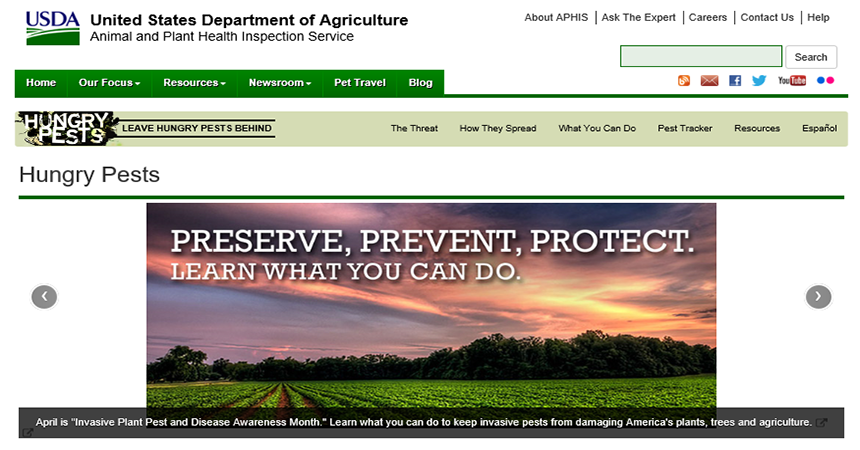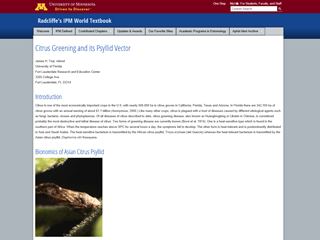
IDaids for Invasive Plant Pest and Disease Awareness Month
Spring has sprung! The weather is warming, which motivates people to make that move to a new place or to take a vacation. But these seemingly harmless activities might actually indirectly harm our environment by spreading invasive pests. So USDA's Secretary Perdue proclaimed April Invasive Plant Pest and Disease Awareness Month, encouraging citizens to actively take part in protecting our natural resources and agriculture by taking steps to restrict the movement of invasive pests caused by human activity.
Taxpayers spend 40 billion dollars annually to mitigate damage from plant pests and pay for management and eradication efforts. And once a pest, disease, or weed becomes established in a region, it can forever change the ecosystem or food available to us. That's why Secretary Perdue has emphasized the importance of public education!
We've gathered this set of IDaids helpful for identifying a few of the destructive pests APHIS considers Hungry Pests! For more information, visit USDA's What You Can Do.
Visit Search IDaids to find identification resources for many more plant pests.
Asian citrus psyllid (Diaphorina citri) is a tiny insect, about the size of a pinhead, that attacks citrus plants and other closely related species in the Rutaceae family (e.g., limeberry, curry leaf, white sapote, etc.). On its own, it's a relatively minor pest, but it can vector the bacteria that causes citrus greening, also known as Huanglongbing, a deadly infection for which there is currently no treatment. What you can do: avoid moving citrus plants, fruits, or plant parts to different areas.
Citrus Greening and its Psyllid Vector
University of Minnesota, United States of America
This chapter in "Radcliffe's IPM World Textbook" discusses the biology and identification of Huanglongbing (HLB) and the disease's psyllid vectors.
The Asian Citrus Psyllid (Diaphorina citri) and Huanglongbing
Community Invasive Species Network, United States of America
This PowerPoint includes many useful photos and links, along with useful information. Hover over the speech bubble icon near the upper left corner to see details about each slide (or right-click in some browsers to open all popups).

